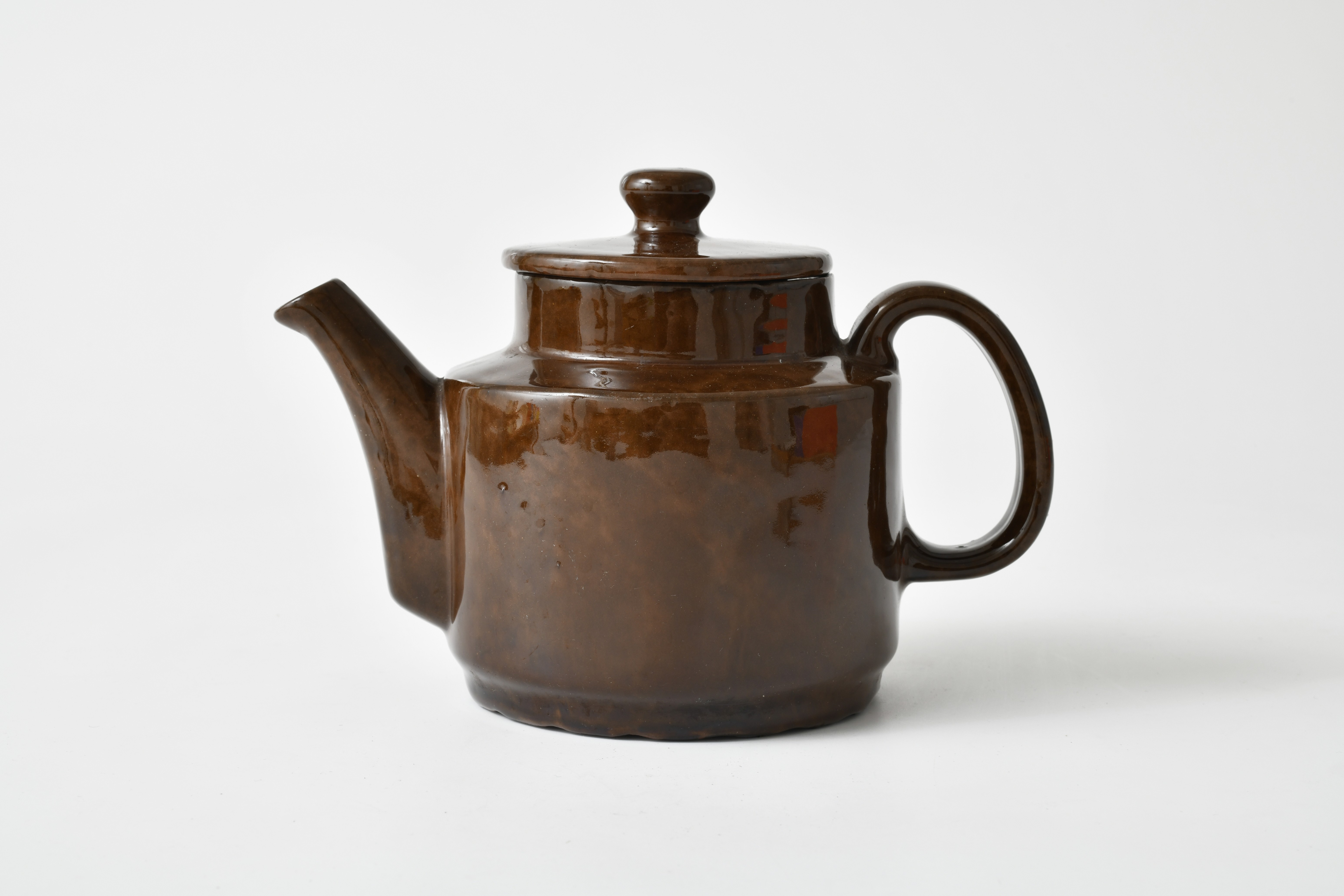Die Kanne besteht aus Steingut und ist braun glasiert. Auf einem leicht nach innen versetzten Fuß lastet der breite zylinderförmige Korpus des Gefäßes. Ihm aufgesetzt ist ein schmaler, ebenfalls zylindrischer Bord. Der Henkel ist gerundet und beginnt auf der Abstufung unterhalb des Bords. Er endet im unteren Drittel der Kanne an der Wandung.
Diametral gegenüber dem Henkel erhebt sich die Schnaupe. Bei frontaler Ansicht wächst diese aus einer längsrechteckigen Form mit abgerundeten Ecken hinaus. Während die obere Seite der Schnaupe geradlinig diagonal verläuft, ist die Unterseite leicht gebogen. Der Deckel wird in den schmalen Bord der Kanne hineingesetzt und liegt auf den Rand auf. Er ist flach gestaltet mit einem pilzförmigen Knauf.
en

